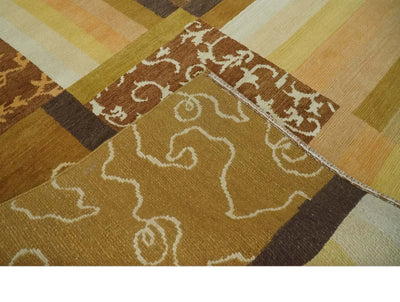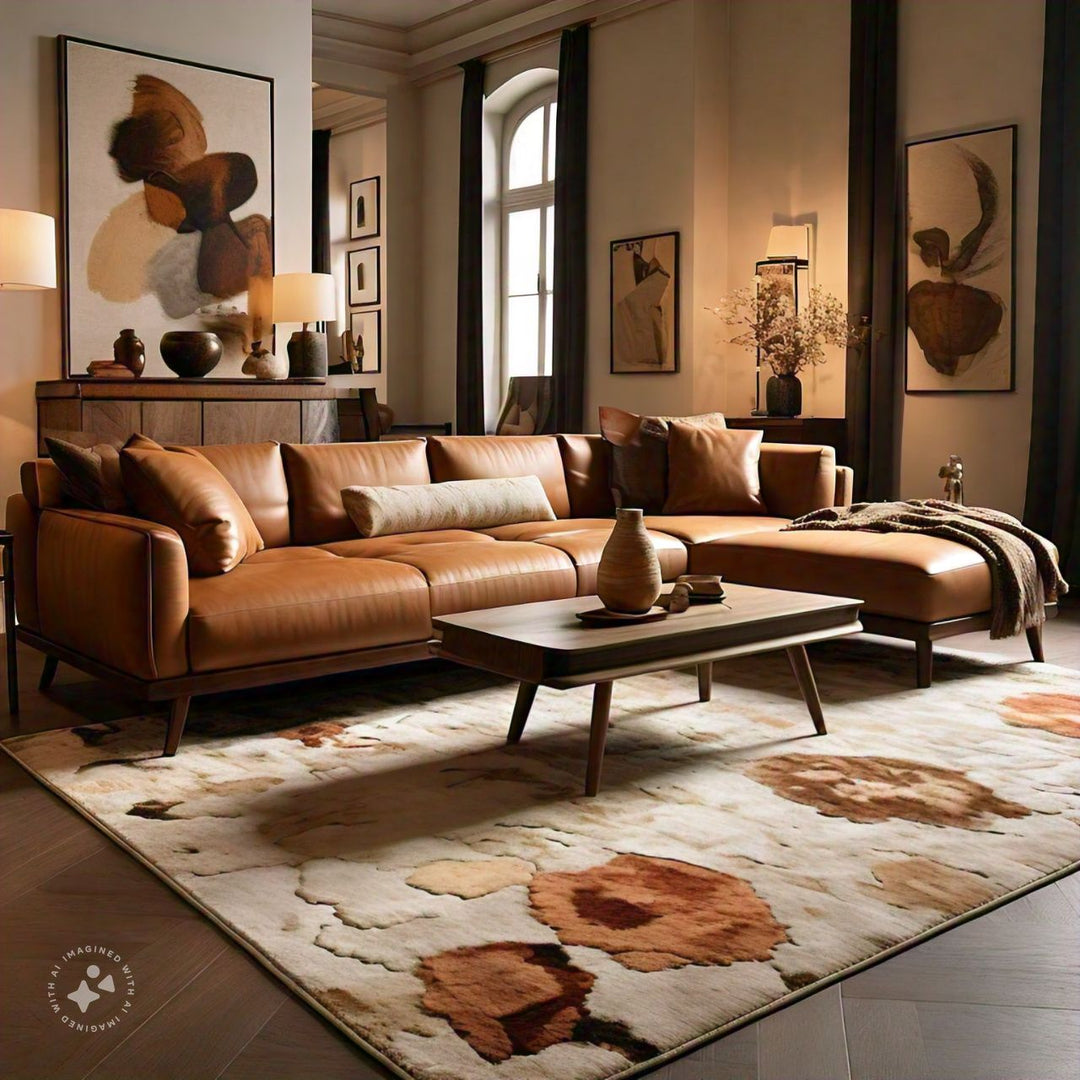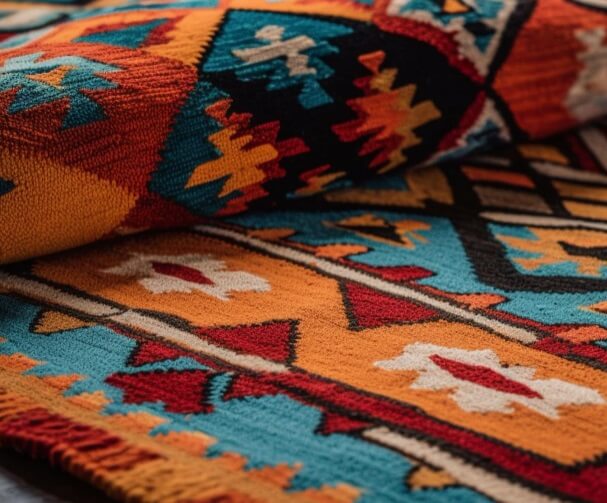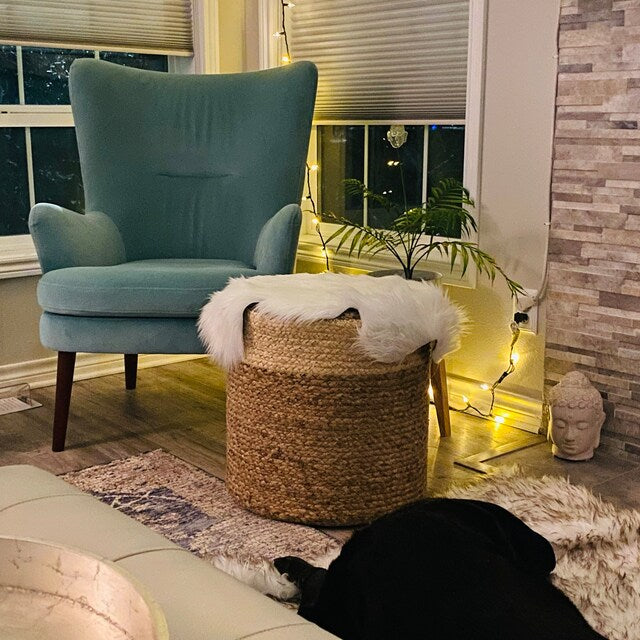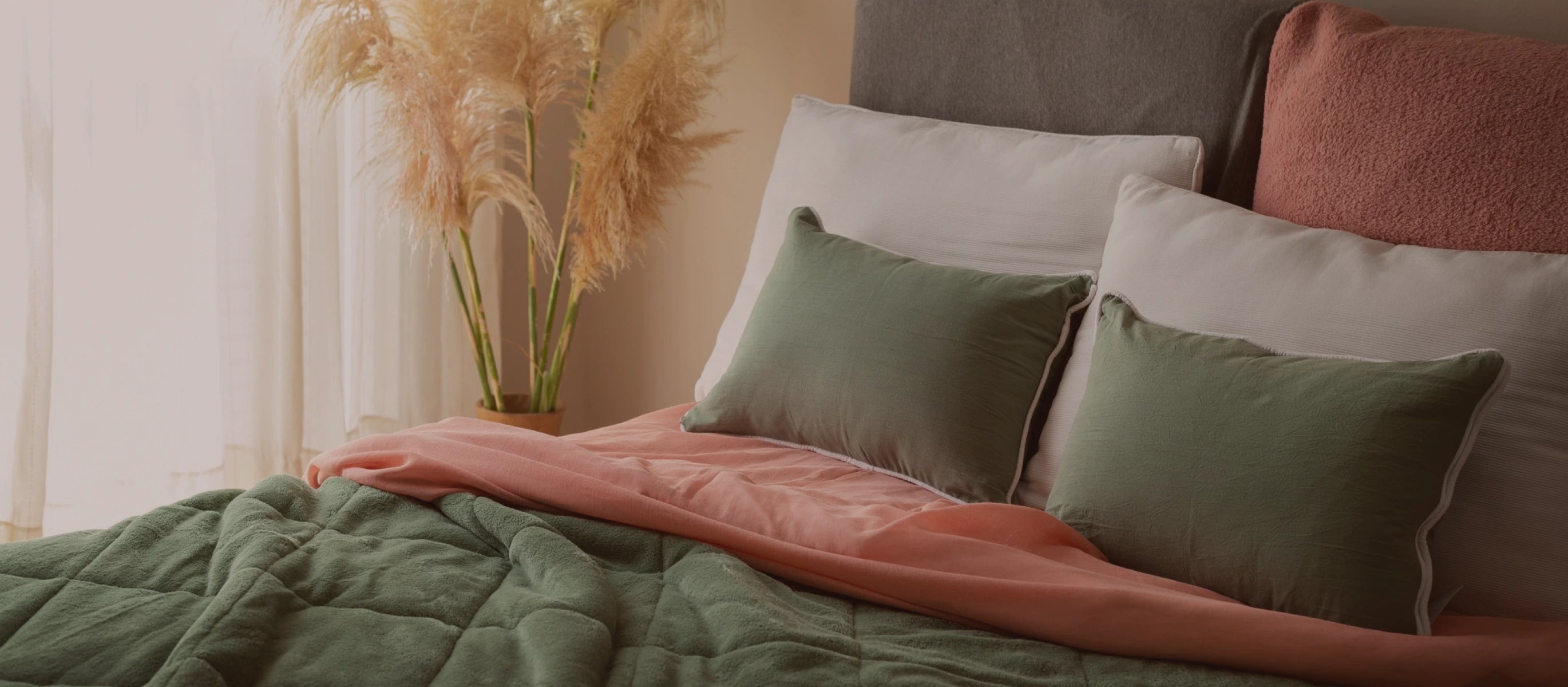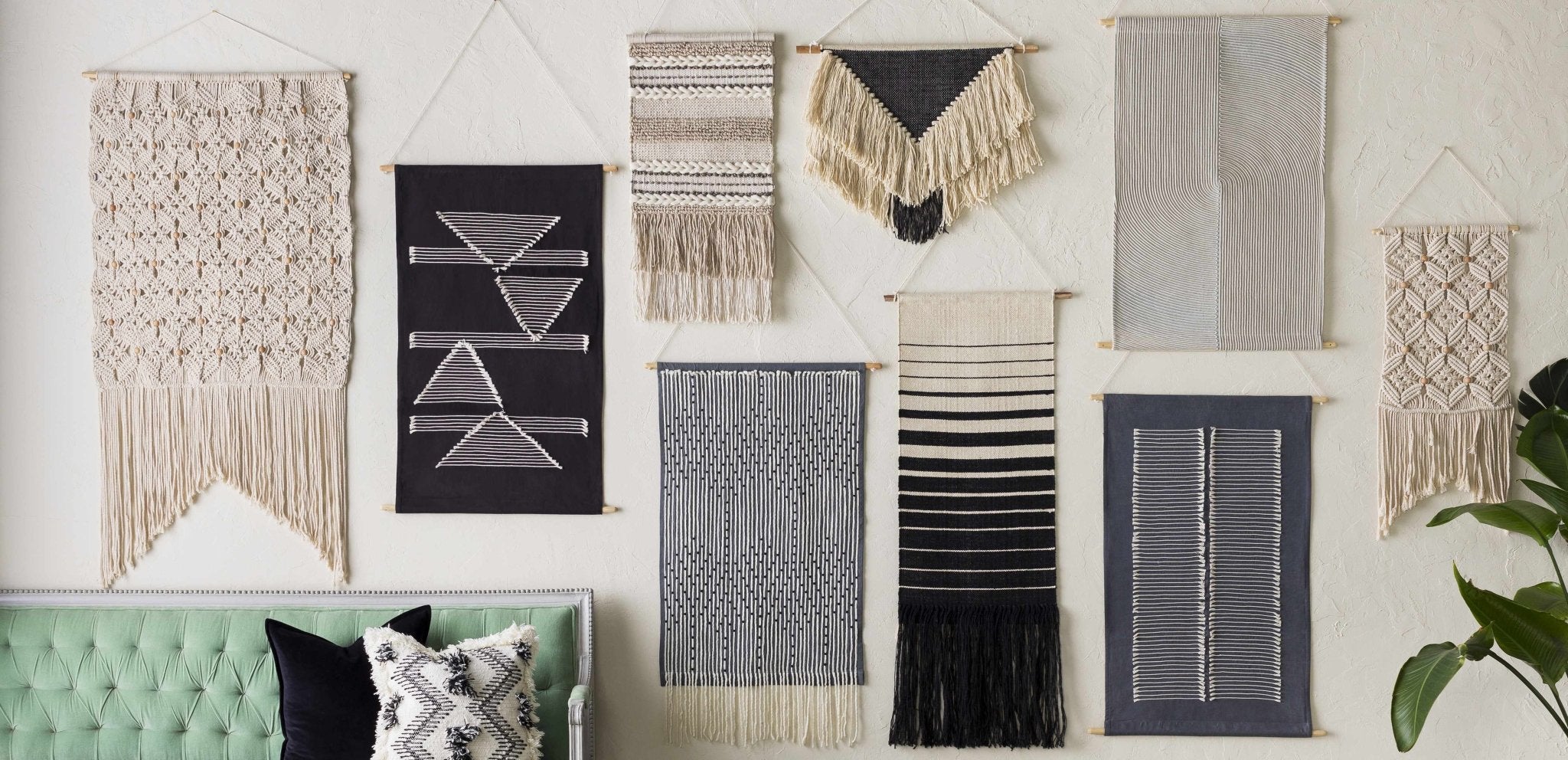Layering Rug: How To Style It?

Home redecoration can be a fun and incredibly therapeutic activity. It can have a calming effect on your mind and transform your existing abode into a more beautiful place.
One of the easiest ways to add a new character to a room is by adding layering area rugs. These rugs can take the aesthetic value of space to the next level by offering more colors, textures, and warmth.
If you are in a dilemma about the best rug layering tips, don’t worry; we have your back. Read along to learn all rug layering techniques' essential dos and don'ts. It is a very simple process that requires just a tiny bit of research and a lot of creativity that you already have!
Simple rug layering tips to learn for better styling
The simple rug layering techniques below will help you style them perfectly. It is all about understanding what compliments your home in the best way.
Layering rugs highlighting a space
Layering rugs to highlight means adding cohesiveness and character to a particular space. By placing a smaller rug on top of a larger one, you can draw attention to that area. This technique can draw attention to eye-catching accessories or furniture in your home that you love.
Layering area rugs to define space
Layering rugs can be a terrific technique to anchor the space where your furniture rests if you are fortunate enough to have huge sections in your home.
This will prevent your furniture from becoming lost in your spacious interior. You may define your space and purpose for the area by layering carpets.
According to established rug guidelines, most furniture should be placed on the rug, and there should be 10 to 20 inches of bare floor between the margins of an area rug and a room's walls. You may define the focal area of your room and prevent it from seeming too crowded by putting a smaller rug over this bigger base mat.
Layering rugs for color and vibrance
A great way to experiment with light and patterns in your space is by layering rugs for color.
Related: How to pick a rug color?
To add dramatic flashes of color and design, vintage Heriz Serapi carpets are fantastic. Choosing rugs for layering will become easier when you plan a neutral base with a smaller pop of colors.
Layering rugs for texture and depth
If you are confused about how to layer rugs for the most refined look, it doesn't necessarily require the addition of color.
In fact, including texture is another excellent method to give your room depth. To create a visually arresting and subtly effective aesthetic, try layering rugs for depth by adding a sheepskin or cowhide to a sisal or jute foundation mat.
Keep experimenting
Don't be scared to try new things. You can use this styling strategy to add depth and visual appeal to any space in your house.
Have fun with it, and switch out your layered rugs frequently to give your house a fresh look. The potential is vast, so interior decorators always prefer experimenting and innovating.
What are the basic rug layering techniques to know?
Grounding the spaces
Your living room's first rug selection will be the biggest. Also, if it is a neutral color, you can add just about any rug on top of it.
The rug in the living room serves to define and anchor the room. Usually, where people sit, the rug ought to be big enough so that the furniture's front legs can at least rest on top of it. Then, you can pile the smaller rug on top.
While layering rugs in the living room, note that the ones with long piles are not the best choice. For the base layer, natural and flat weave rugs made of sisal, jute, and sisal work well.
These rugs are more stable, long-lasting, and frequently have a weave pattern you won't mind heavily covering. Besides, it won't be overly elaborate, which is usually what you want.
Choose rug dimensions properly
Rug layering is surely a good idea for more intricate carpets. However, avoid going too small if you only lay two rugs in the living room. Going from a large rug to a small one will also appear strange.
A proper border should surround the carpeting on top. The size of the rug on top should be around two-thirds that of the rug at the bottom. That is true if you only use two carpets to create the layered appearance. If you need more than one rug, it is always ideal to pile them on top of the primary rug.
Related: How to measure a rug?
Instead of attempting to center them on top of one another, overlap the third smaller rug over the second. You can experiment with the angle to draw attention to a specific piece of furniture in the room.
Experiment with various textures
While layering area rugs, experiment with various textures to learn what is best for your home. Even if you choose a neutral color scheme, experimenting with various textures creates a pleasing contrast in the room. Ultimately, it shouldn't appear that you have two identical rugs or just a huge version of one.
Related: How to choose the right rug?
While layering rugs for dining rooms, a natural rug makes a great starting point because it contains multiple color tones. It provides a robust, long-lasting foundation on top of which you can layer softer rugs.
On the other hand, if you are layering rugs for bedrooms, choose a rug with a moderate pile and a thicker shag on top. Perhaps a delicately woven rug on top of a soft pile rug. Choose a thin, plush rug for the top, or the bottom rug will have a thick, natural weaving.
Play with colors and designs
While layering carpets, the colors utilized should go well together. Layering rugs for color should be done in a way that there is a similar color tone and tint. As a result, there is a connection between the two rugs, and it doesn't appear completely random. The pattern is another way to connect the carpets.
Mixing rug patterns in layering is an excellent technique too. For instance, a rug has a stripe and a diamond design or thin and thick stripes in various pattern scales.
If a minimalist appearance is what you're going for, experiment with carpets in various textures and plain or neutral colors. This appearance will be more understated and classier.
See your living room as it is at the moment. Does the wall covering in your living room feature patterns?
A rug with a different scaled design from your wallpaper could be paired with a neutral rug as a base. That pairing would also work well if you wanted to add a splash of color to a transitional space.
It's important to think about the living room's general design! The first rug doesn't need a solid color because you're starting with a neutral base. The same applies to rugs with patterns and motifs too.
Learn how to layer rugs properly
Do not be afraid to layer rugs on top with odd shapes, such as cowhide rugs. They don't have to be in the center of the bottom rug if you're stacking hides on top. You can experiment with different configurations and angles.
Simple Do’s and Don’ts for rug layering
Here are a few points explaining what you should do and avoid while layering rugs on the carpet:
Do: Experiment layering with both solids and patterns
While some experts suggest that mixing rug patterns in layering is not a great idea, others feel otherwise. Therefore, applying your creative skills to understand what will look better for your home is best. However, if you mix both, it is best to top a solid color rug over a patterned one.
Do: Try layering only in larger rooms
It is best to try layering area rugs in larger, more spacious rooms than smaller ones. It is because layering in big rooms is an anchor for the furniture and offers a complete look. However, layering in a small room may make it look messy and congested.
Do: Learn layering rugs on carpet
While rugs and carpets are used interchangeably, the latter is usually a larger version of its counterpart. That’s why it is always ideal to place the larger piece below and top it with the smaller rug.
Do: Maintain proper rug placement
Rugs are a great opportunity to display your aesthetic tastes, but they are also useful items that should be given priority placement.
Therefore, while choosing rugs for layering, it is important to consider and measure the area where you will place the same. The strategic placement of rugs will bring out the most refined and stylish looks.
Do: Consider comfort and safety
Tripping hazards are the last thing you would want in your home. That’s why it is best to use rug pads while layering rugs. Also, make sure that the bottom or base layer of the carpet is always a heavier variety so that it stays in place.
Don’t: Think about rules too much
Your home's choice and placement of rugs reflect your personality and taste. Therefore, there is no need to go by a rule book when mixing patterns and colors or making the right or wrong rug choices. If you feel a particular rug suits your abode, go for it!
Choosing rugs for layering based on material
Layering area rugs
In a living room or any other high-traffic area of your house, area rugs can be piled. You might consider putting down an area rug for added comfort and warmth on hardwood floors. Choosing an area rug size proportionate to the room's furniture is crucial when layering rugs.
For instance, you should pick a bigger rug if your sofa is big. You can use a runner or a smaller rug if your area is limited. Also, select a variety of patterns and textures. The room will gain depth and aesthetic intrigue as a result. For instance, you can layer a plain-colored rug on top of a solid-colored one as the base.
Layering wool rugs
It is comparatively easier to layer wool rugs, and it is also a good idea. You can layer a solid-colored, high-pile wool rug with a more detailed Persian or Turkish Heriz rug on top. You can also go for a more textured bottom and keep it softer on top.
Layering jute rugs
The best part about placing natural fiber rugs, such as jute ones, is that you can experiment with your choices freely. Make sure you choose the right colors and sizes to achieve a balanced look.
Layering shag rugs
Any room in your house can benefit from the aesthetic and coziness of a layered shaggy rug. A thinner base rug and a thicker, shaggier top layer make up the layered appearance. These elements can help create a cozy, inviting room for entertaining friends or unwinding.
While selecting a layered shaggy rug for your home, consider the size and traffic of the space you will use it in. Second, pick a color or pattern that goes well with the rest of your decor. Finally, remember to vacuum frequently to keep the layers' integrity.
How to layer an area rug in a living room?
When it comes to styling a living room, there are many ways to add visual interest and comfort. One popular trend is to layer area rugs. This can create a layered look that is both stylish and functional.

Here are some tips on how to layer an area rug in a living room:
- Choose the right rug: The first step is to choose a rug that is the right size for the space. It should be large enough to cover the entire floor space but not so large that it overpowers the room's other elements.
- Consider the colors and patterns: Another important factor to consider is the colors and patterns of the rug. You want to choose a rug that complements the other colors and patterns in the room.
- Choose the right material: The rug's material is also important. You want to choose a material that is durable and easy to clean.
- Place the rug properly: Once you have chosen the perfect rug, it's time to place it properly. Make sure you position the rug evenly in the room, so it doesn't look off-balance.
- Add additional layers: To add even more visual interest, you can add additional layers, such as throws or pillows. This will give the room an inviting and cozy feel.
Related
Softest Rug Materials
Best Rug Material for Pets
How to layer an area rug in a bedroom?
Many homeowners are now layering rugs in their bedrooms to add texture, interest, and comfort underfoot. If you're interested in trying this trend in your bedroom, here are some tips to help you get started.
When layering rugs, it's important to consider the space's function and aesthetics. For example, if you want to add warmth to a room, you might layer a thicker woolen rug over thinner cotton or bamboo. On the other hand, if you're trying to achieve a more layered and luxurious look, you might pair a vintage rug with a more contemporary style.
Related: Bedroom Rug Ideas
Once you've decided on the function and aesthetics of your layered rug arrangement, it's time to choose the right size for each rug. As a general rule, the bottom rug should be large enough to extend beyond the edges of the bed, while the top rug should be smaller and centered in front of the bed. If you're using two rugs of different sizes, it's often best to choose one 2-3 feet larger than the other.
Finally, when layering rugs in a bedroom, it's important to consider the mattress height and any furniture on or around the bed. For example, if your bed is higher off the ground (such as a platform bed), you'll want to ensure that your bottom rug is low-pile so that it doesn't bunch up when someone steps on it.
Conversely, if you have furniture around your bed (such as a nightstand), you may want to avoid placing too much furniture on top of your layered rugs, so they don't get trapped underneath.
Arranging rugs in Layers
Which rug is suitable for layering the Doormat?
The rug size of 2x3 and 2x4 for entryways and doors can be layered with a 3x5 or 4x6 rug. If the entryway rug is of 3x5 size then can be layered with a 4x6 rug.
Which rug is suitable to place beneath a 5x7 or 5x8 rug for layering?
The average size of rooms like offices, bedrooms, and living rooms. The best size to put under a 5x8 rug is an 8x10 or 9x12 rug, which will help your decor stand out. You're following the rules if you leave a minimum of 1.5 feet of extra rug on each end and side. Here, an 8x10 or 9x12 rug is the best choice.
What is the recommended rug to layer over a 9x12 rug?
Using a 9x12 rug as your base size is great in medium to large living rooms, bedrooms, and dining rooms. Although it may be promising to just go down one size to 8x10 rugs, you ought to choose a smaller rug to put on top so that the rug underneath can still be seen.
Ideal Rug Size to Put on Top of a 9x12 Rug: A 5X7, 5X8, or 6X9 rug is a great way to make your rugs stand out.
Final thoughts
Your entire room can benefit from layering rugs- be it the living room, dining room, bedroom, hallways, and more. Rug layering makes a space more interesting and adds color, texture, and dimension.
By simply experimenting with new things, you may achieve various appearances. The techniques and tips mentioned above apply to both indoor and outdoor rugs.
FAQs
What is rug layering?
Layering one or more rugs on top of a base carpet is called rug layering. It gives a space a more aesthetic and elegant look and keeps the floor warm during winter.
What are the dos of rug layering?
While there is no mandatory rule book for rug layering, choosing rugs of the right size, color, and texture is best for the best look. Using rug pads and placing the rugs in the right places is also important.
What are the don’ts of rug layering?
The basic don’t of rug layering is placing the smaller rug below a larger one. Besides, layering rugs in small rooms is also not the best idea.
How do I choose the right rugs to layer?
Go for natural neutral-colored fibers while choosing rugs for layerings, such as sisal, wool, and jute. It is also ideal to choose low-pile rugs as the base layer.
What are some examples of rug layering styles?
Some common rug layering styles include pattern-on-pattern, solid-on-solid, and more.
Can I layer rugs on carpets?
Yes, it is the best option to layer rugs on carpets.
What size rug to layer over 9x12?
You can layer a 5x7, 5x8, and 6x9 rug sizes over a 9x12 rug.
What size rug to layer over 8x10 rugs?
You can layer a 4x6 or a 5x7 rug over 8x10 rugs.

